For many dog lovers, the joy of pet ownership is often accompanied by the challenge of managing shedding dog hair or dealing with pet allergies. If you dream of sharing your home with a furry friend but prefer a clean, hair-free environment or need an allergy-friendly companion, you’re in luck! There are numerous delightful small cute dogs that don’t shed or shed very minimally, offering the best of both worlds: adorable companionship without the constant cleanup. From charming lap dogs to energetic little adventurers, these breeds prove that you don’t have to compromise on cuteness or personality to find a low-shedding pal. This guide will introduce you to some of the most popular and endearing small breed of dogs that don’t shed, helping you find the perfect match for your lifestyle.
Affenpinscher
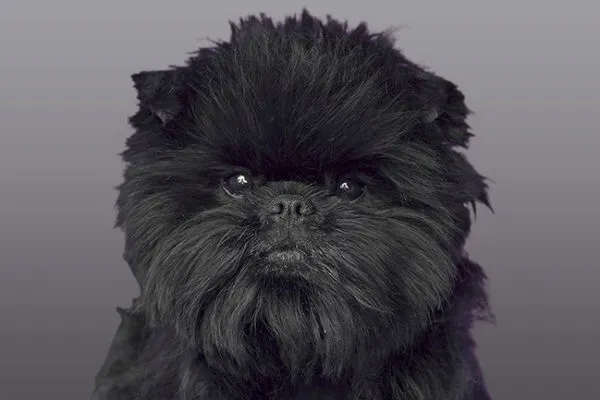 Affenpinscher with bright eyes and shaggy black coat
Affenpinscher with bright eyes and shaggy black coat
Often described as “monkey-like terriers” due to their intelligent expressions and distinctive facial hair, Affenpinschers are small dogs with big personalities. Don’t let their petite size fool you; these fearless little canines are alert watchdogs. One of their most appealing traits for allergy sufferers is their wiry, low-shedding coat, which also tends to have very little doggy odor. Regular grooming, typically a twice-weekly brushing with a slicker brush and comb, is sufficient to keep them looking neat and tidy. Affenpinschers are known for their playful antics and sense of humor, making them a lively and entertaining addition to any home.
Basenji
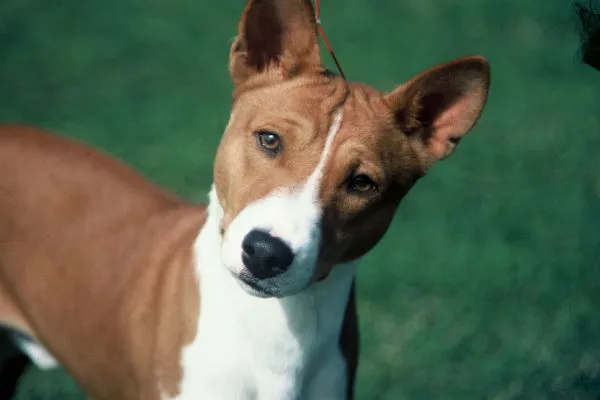 Basenji dog with short brown and white coat looking alert
Basenji dog with short brown and white coat looking alert
If you’re drawn to the unique charm of hounds but are deterred by their shedding habits and distinct scent, the Basenji might be your ideal companion. These elegant and athletic dogs shed very minimally, thanks to their short, fine coats that require little more than occasional brushing. Basenjis are also famously known as “barkless dogs,” emitting a unique yodel-like sound instead of traditional barking, which makes them excellent choices for apartment living, provided they receive daily exercise and mental stimulation. Their clean nature and striking appearance make them truly captivating small cute dogs that don’t shed.
Bichon Frise
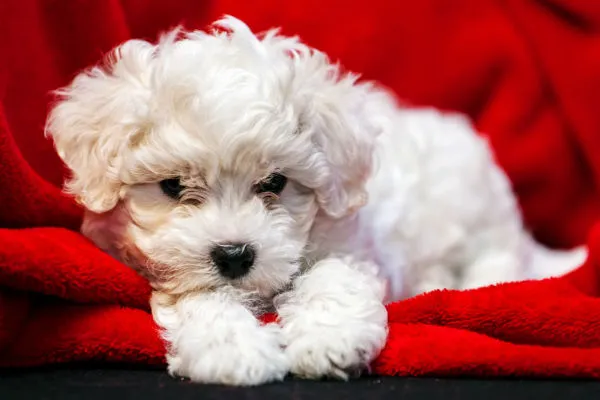 Fluffy white Bichon Frise with black nose and eyes
Fluffy white Bichon Frise with black nose and eyes
The Bichon Frise is the quintessential non-shedding small dog breed, often lauded as an ideal choice for individuals with allergies. These playful and affectionate dogs possess a cheerful disposition that brightens any home. While they don’t shed, their distinctive powder-puff coats grow continuously and require consistent grooming. This includes frequent brushing, regular trims, and occasional baths to prevent matting and maintain their iconic fluffy appearance. Despite the grooming commitment, the joyful spirit and endearing looks of a Bichon Frise make the effort incredibly rewarding.
Bolognese
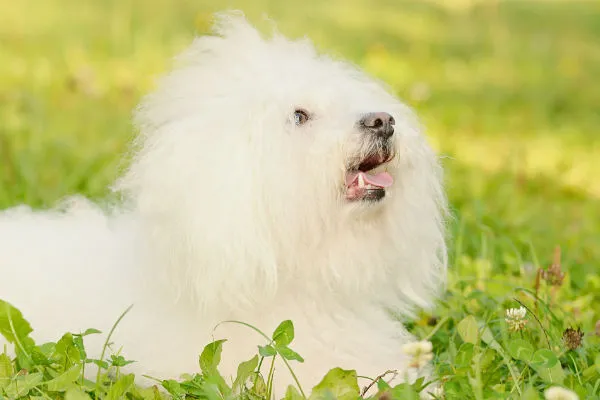 White fluffy Bolognese dog with a sweet expression
White fluffy Bolognese dog with a sweet expression
Much like their Bichon relatives, Bolognese dogs are distinguished by their unique fluffy coats, which are composed of hair rather than fur. This means they are truly non-shedding, making them another fantastic option for those seeking small cute dogs that don’t shed. While Bolognese won’t leave hair all over your home, their soft, cotton-like coat requires daily grooming to remove dead hairs and prevent mats. These lovable lap dogs thrive on companionship and are happiest when close to their human families. Their charming demeanor and low-shedding attribute contribute to their growing popularity.
Brussels Griffon
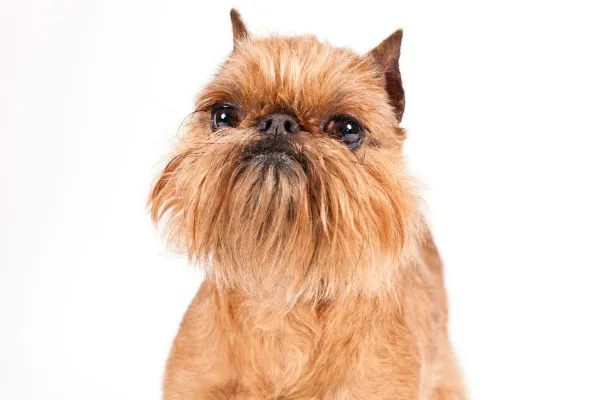 Brussels Griffon dog with scruffy brown coat and expressive eyes
Brussels Griffon dog with scruffy brown coat and expressive eyes
Despite their diminutive size, Brussels Griffons are robust dogs that don’t demand excessive pampering. Available in both smooth-coated and rough-coated varieties, both types are minimal shedders, making them a great choice for those seeking small, tidy companions. Regular grooming is beneficial for both coat types to keep them looking their best. Their small stature means that daily walks and indoor play typically suffice for their exercise needs. Brussels Griffons are loyal and affectionate, thriving in homes where they can be a central part of family life, displaying their intelligence and often comical expressions.
Chinese Crested
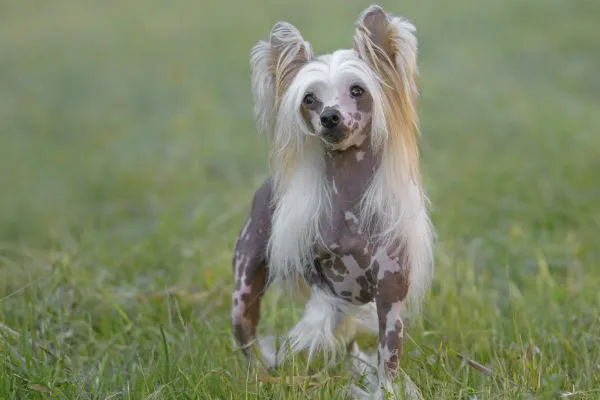 Hairless Chinese Crested dog with tufts of hair on head, feet, and tail
Hairless Chinese Crested dog with tufts of hair on head, feet, and tail
For those looking to completely avoid shedding, the Chinese Crested offers a unique solution. This breed comes in two distinct coat types: the hairless and the powderpuff. The hairless variety sports charming tufts of hair on its head, tail, and feet, while the powderpuff is covered in a fine, silky coat that sheds very minimally. Hairless dogs, like the Chinese Crested, require special skin care to protect them from sun exposure and cold temperatures, and to prevent skin irritations. Regardless of coat type, these are truly distinct and affectionate small cute dogs that don’t shed, bringing an exotic charm to their owners’ lives.
Coton De Tulear
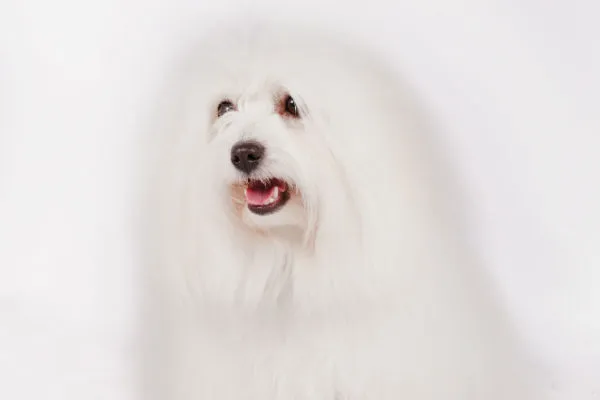 Coton de Tulear with long, white, fluffy coat
Coton de Tulear with long, white, fluffy coat
The Coton de Tulear, often referred to as the “Royal Dog of Madagascar,” boasts a distinctive, long, fluffy coat that is considered hypoallergenic. This makes them an excellent choice for individuals with allergies and those who desire a small cute dog that doesn’t shed. While their luxurious coats do require daily grooming to prevent matting and maintain their pristine appearance, their lighthearted, gentle, and clownish natures make the grooming effort a delightful bonding experience. Cotons are highly adaptable and thrive on human companionship, making them wonderful family pets.
Havanese
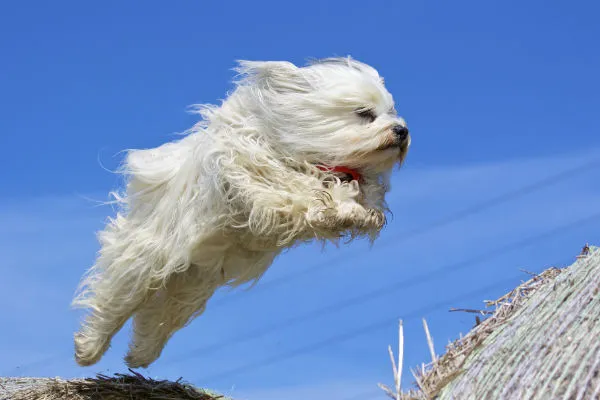 Havanese dog with long brown and white coat, playful expression
Havanese dog with long brown and white coat, playful expression
Hailing from Cuba, the Havanese charms owners with its spunky personality and a coat that is wonderfully low-shedding. This means less time spent battling dog hair on furniture and more time enjoying the playful antics of this affectionate breed. Their long, silky coats require weekly brushing and regular baths to keep them clean, healthy, and tangle-free. Havanese are intelligent, social, and eager to please, making them highly trainable and delightful companions. They are a prime example of small to medium dogs that don’t shed, perfect for active families or individuals seeking a lively, devoted friend.
Maltese
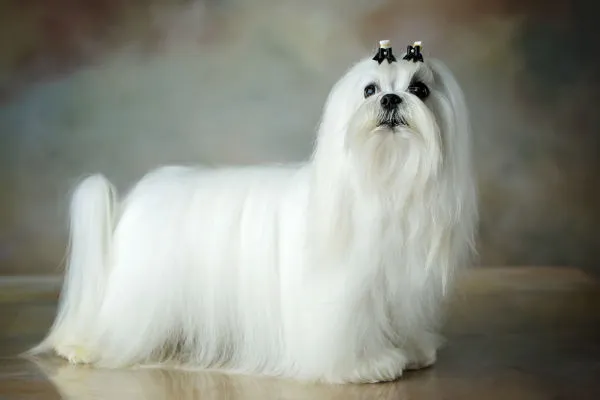 Maltese dog with flowing white hair and a bow
Maltese dog with flowing white hair and a bow
For over three millennia, Maltese dogs have captivated hearts with their elegant appearance and charming demeanor. This ancient breed from Malta remains largely unchanged, perhaps owing to their long, flowing white coats that shed very little, making them ideal lap dogs. While their minimal shedding is a huge plus, their silky coats do require consistent attention. Regular brushing is essential to prevent mats from forming, and occasional baths are needed to keep their pristine white hair clean and radiant. Maltese are gentle, affectionate, and resilient, truly living up to their reputation as regal and loving companions.
Lhasa Apso
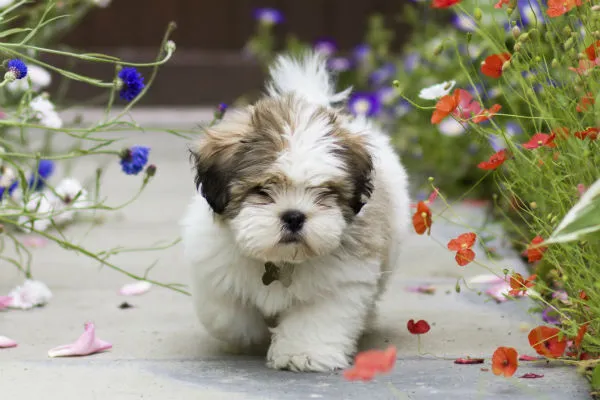 Lhasa Apso with long, dark coat and confident expression
Lhasa Apso with long, dark coat and confident expression
Originating from the Tibetan Himalayas, the Lhasa Apso is a sturdy and captivating small breed of dogs that don’t shed. These dogs make excellent companions, blending a calm and dignified demeanor with a playful spirit. They enjoy brisk walks but are equally content lounging in their owner’s lap. Although Lhasa Apsos are non-shedding, their long, flowing double coats require significant maintenance. Many owners opt for a shorter “puppy cut” to simplify daily grooming and brushing, ensuring their furry friend remains comfortable and stylish without the extensive upkeep of a full show coat.
Miniature Schnauzer
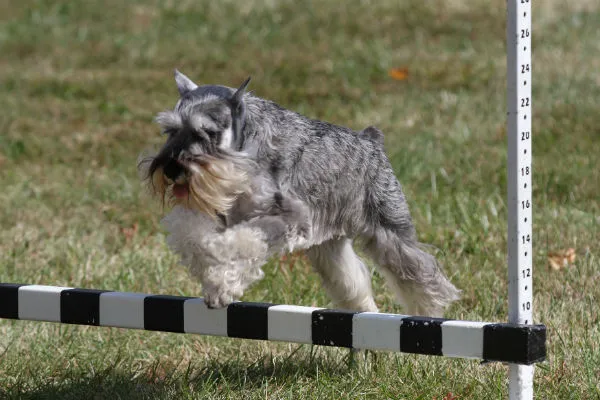 Miniature Schnauzer with distinctive beard and eyebrows
Miniature Schnauzer with distinctive beard and eyebrows
The Miniature Schnauzer is a vibrant and intelligent terrier, closely resembling its larger Standard Schnauzer cousin. These cheerful little dogs are known for their distinctive bearded snouts and expressive eyebrows. As minimal shedders, they are a great choice for those concerned about dog hair. Miniature Schnauzers are highly adaptable, equally comfortable in a city apartment or a country home, as long as they are close to their human companions. To maintain their iconic look and coat health, weekly brushing and regular professional grooming, often including stripping or clipping, are essential.
Poodle
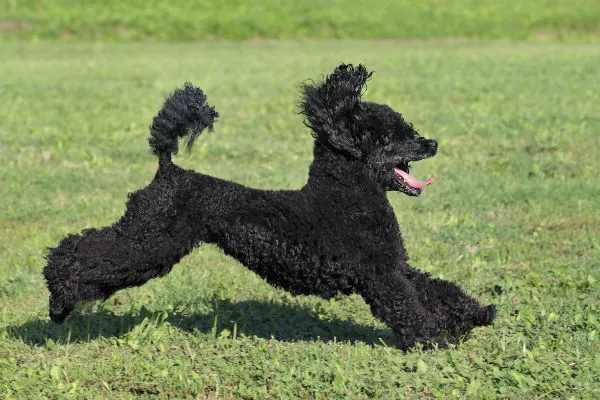 Poodle with signature fluffy coat
Poodle with signature fluffy coat
When people think of small cute dogs that don’t shed, Poodles are often the first breed that comes to mind, and for good reason. Poodles, in all their sizes—Standard, Miniature, and Toy—are renowned for being non-shedding and hypoallergenic. Miniature and Toy Poodles offer these desirable qualities in petite, intelligent packages, making them perfect for families or individuals seeking a smaller companion. All Poodles are exceptionally intelligent, highly trainable, and active dogs with a proud bearing. Their curly coats require regular professional grooming and frequent brushing at home to prevent matting and keep them looking their best. If you’re looking for red Toy Poodle puppies or even black Toy Poodle puppies, you’ll find they all share the same excellent non-shedding qualities.
Scottish Terrier
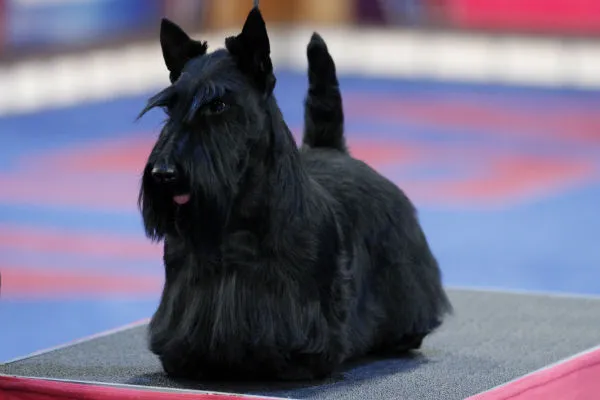 Scottish Terrier with wiry black coat
Scottish Terrier with wiry black coat
Affectionately known as Scotties, Scottish Terriers are a breed recognized for their bold, confident, and larger-than-life personalities. Their wiry, weather-resistant double coats shed very little, making them another excellent choice among small cute dogs that don’t shed. While low-shedding, their coats do require regular brushing, grooming, and occasional hand-stripping to maintain coat health and their distinctive breed outline. Scotties are clever and independent dogs with strong prey drives, so owners should be mindful when they are around smaller animals. Their loyalty and unique character make them cherished family members.
Shih Tzu
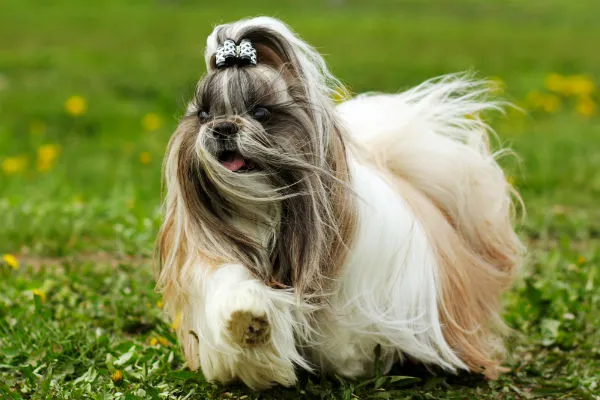 Shih Tzu with long, silky coat and proud posture
Shih Tzu with long, silky coat and proud posture
The Shih Tzu boasts an ancient and royal lineage, having been favored house pets of the Tang Dynasty. These “little lion dogs” come in a beautiful array of colors and patterns. Their long, silky hair is very low-shedding and looks exceptionally regal when brushed out, truly befitting their aristocratic ancestry. As one of the most beloved small cute dogs that don’t shed, the Shih Tzu was specifically bred to be a house companion. They are sturdy, lively, and possess a gentle, trusting nature that makes them outstanding companions. Their proudly held heads and curling tails give them an often-described “arrogant” carriage, adding to their charming allure.
West Highland White Terrier
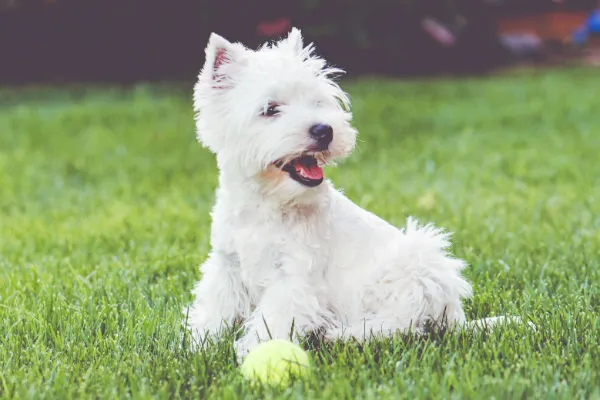 West Highland White Terrier with coarse white hair
West Highland White Terrier with coarse white hair
The West Highland White Terrier, fondly known as a “Westie,” is celebrated for its coarse, bright white coat that sheds very little. These sturdy and spirited little dogs are intelligent, loyal, happy, and immensely entertaining. Westies are curious dogs with moderate energy levels and possess the independent streak common to many terriers, which can sometimes make training a fun challenge. Their cheerful disposition and low-shedding coat make them a fantastic choice for families looking for an active and personable companion that won’t leave a trail of hair.
Xoloitzcuintli
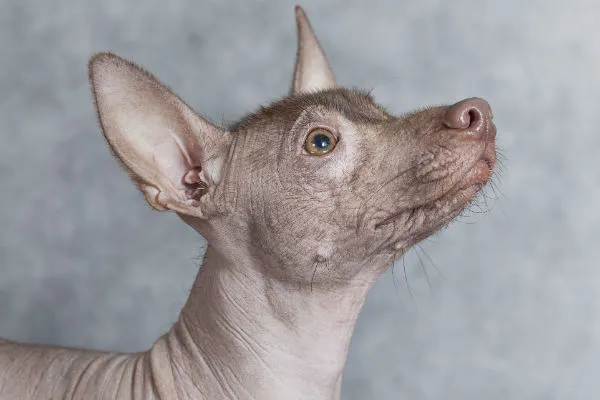 Hairless Xoloitzcuintli dog with wrinkled skin and intelligent eyes
Hairless Xoloitzcuintli dog with wrinkled skin and intelligent eyes
Also known as the Mexican Hairless, the Xoloitzcuintli is an ancient and relatively rare breed that can be found in either hairless or coated varieties. The hairless type retains a small amount of hair on its head, while the coated variety has a very short, fine coat that sheds minimally. Similar to other hairless breeds, Xolos require extra attention to their skin, needing protection from the sun and cold. These attentive watchdogs are also affectionate companions. While they enjoy physical activities, they are well-known for their tranquil and calm personalities around the home, making them unique and loyal pets.
Yorkshire Terrier
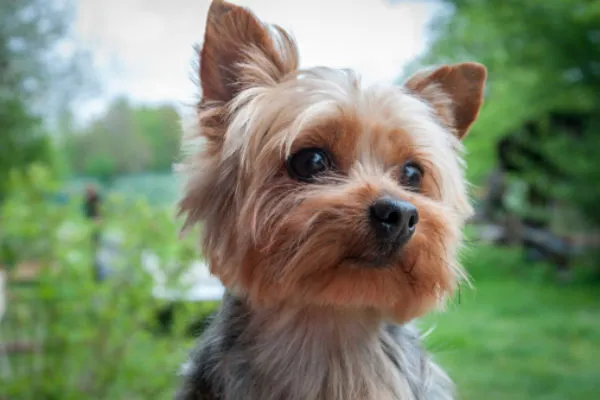 Yorkshire Terrier with silky, long coat and a playful expression
Yorkshire Terrier with silky, long coat and a playful expression
Sprightly, spirited, and undeniably affectionate, the Yorkshire Terrier, or “Yorkie,” is a small cute dog that doesn’t shed but is packed with personality. These spunky lap dogs are incredibly popular, and for good reason. Yorkshire Terriers do not shed, and their beautiful, silky coats are a joy to brush daily, an easy task given their small size. Don’t be fooled by their regal appearance; Yorkies have working-class roots, originally hunting rats in English clothing mills. Today, they are just as content to sit lovingly on their owner’s lap as they are to chase after a toy.
Why Choose Small Cute Dogs That Don’t Shed?
The decision to bring a dog into your home is a significant one, and opting for a small cute dog that doesn’t shed comes with several distinct advantages:
- Allergy Management: For individuals or family members prone to pet allergies, non-shedding breeds can dramatically reduce allergic reactions. While no dog is 100% hypoallergenic, these breeds typically produce less dander (skin flakes) and loose hair, which are common triggers.
- Cleaner Home Environment: Less shedding means less dog hair on your furniture, floors, and clothing. This translates to less time spent vacuuming and cleaning, allowing you more quality time with your furry friend.
- Reduced Grooming for You (Sometimes!): While non-shedding breeds often require professional grooming, they typically don’t require daily de-shedding efforts from the owner. You’ll avoid the seasonal “blowout” that heavy-shedding breeds experience.
- Portability and Adaptability: Small breeds are generally more portable and adapt well to various living situations, including apartments and smaller homes. Their reduced shedding is an added bonus for compact living.
- Unique Coat Textures: Many non-shedding breeds boast unique coat textures, from the wiry feel of a terrier to the silky strands of a Shih Tzu, offering a diverse range of tactile experiences.
Essential Grooming Tips for Low-Shedding Breeds
While the term “non-shedding” is appealing, it’s crucial to understand that it doesn’t mean “zero maintenance.” These breeds simply don’t release their hair in the same way as fur-coated dogs. Instead, their hair grows continuously, similar to human hair, making regular grooming vital.
- Daily or Weekly Brushing: To prevent matting and tangles, especially for long-haired breeds like the Maltese or Shih Tzu, daily or every-other-day brushing is often necessary. Breeds with wiry coats, like many terriers, benefit from weekly brushing.
- Professional Grooming: Many non-shedding breeds require regular professional grooming appointments (typically every 6-8 weeks) for trims, haircuts, and thorough cleaning. This is essential to maintain their coat health, prevent matting, and keep them comfortable.
- Bathing: Regular baths, using a dog-specific shampoo and conditioner, are important to keep their coats clean and their skin healthy. The frequency will depend on the breed’s coat type and activity level.
- Nail Trims and Ear Cleaning: Don’t forget these essential grooming aspects for all dogs. Regular nail trims prevent discomfort and potential health issues, and ear cleaning helps prevent infections.
Choosing a small cute dog that doesn’t shed can be a wonderful decision for many households, particularly those with allergy concerns. However, it’s vital to research thoroughly and understand that “low-shedding” doesn’t mean “no care.” Each breed has specific grooming needs, temperament traits, and exercise requirements. Take the time to consider which of these remarkable small medium dog breeds that don’t shed best aligns with your lifestyle and family dynamics. Always consider purchasing your pet from a responsible breeder and ensure they receive a high-quality diet and regular veterinary check-ups to maintain their health and happiness.
